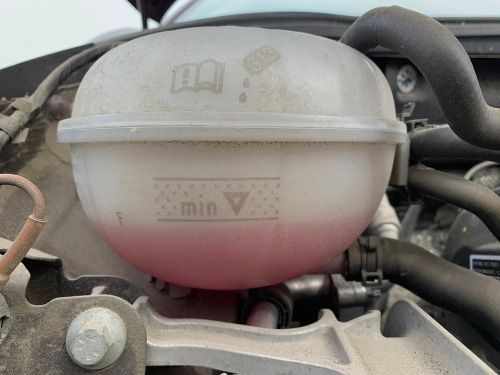What Are the Signs Your Car’s Cooling System Needs Attention?
smp-hemlock • June 24, 2024
Discover expert wheel alignment services at Hemlock Auto & Alignment in Hemlock, MI. Enhance vehicle safety & performance. Visit us today!
Your car’s cooling system plays a crucial role in maintaining the optimal temperature of your engine, preventing it from overheating. If your cooling system is malfunctioning, it can lead to severe engine damage and costly repairs. This blog post will guide you through the signs that indicate your car’s cooling system needs attention and how Hemlock Auto & Alignment in Hemlock, MI , can help you diagnose and repair these issues.

Coolant leaks are one of the most common signs that your cooling system needs attention. You may notice puddles of coolant under your car or a drop in the coolant level in the reservoir. Coolant has a sweet smell and is typically green, orange, or pink. If you suspect a coolant leak, it’s essential to get it checked immediately to prevent overheating.
An overheating engine is a clear indicator that your cooling system isn’t functioning correctly. You might notice the temperature gauge rising above normal or steam coming from the hood. Driving with an overheating engine can cause significant damage, so it’s crucial to address this issue promptly.
If you frequently need to top off your coolant, there might be an underlying issue. Persistent coolant loss can be due to leaks, a failing radiator, or other components within the cooling system that require professional attention.
Coolant should be bright and clear. If it appears rusty, oily, or contains debris, it indicates contamination. Contaminated coolant can affect the efficiency of the cooling system and lead to further issues.
Strange noises from the engine , such as grinding or squealing, can be a sign of a failing water pump or other cooling system components. These noises often occur due to worn-out parts that need to be replaced.
Seeing steam or smoke coming from under the hood is a serious sign of a cooling system failure. It indicates that the engine is overheating and can cause severe damage if not addressed immediately.
Many drivers underestimate the importance of regular cooling system checks. The cooling system not only prevents the engine from overheating but also ensures that it operates efficiently. A well-maintained cooling system can improve fuel efficiency and reduce the risk of engine damage, saving you money in the long run. At Hemlock Auto & Alignment, we recommend having your cooling system inspected at least once a year or every 30,000 miles.
It’s a good practice to check your coolant level at least once a month. If you notice frequent drops in the level, it’s a sign that you should have your cooling system inspected.
No, driving with an overheating engine can cause severe damage. It’s best to pull over, turn off the engine, and seek professional help immediately.
At Hemlock Auto & Alignment , we specialize in diagnosing and repairing cooling system issues for all makes and models, including Toyota vehicles. Here’s how we can assist you:
Keeping your car’s cooling system in good condition is essential for the longevity and performance of your vehicle. If you notice any of the signs mentioned above, don’t hesitate to bring your car to Hemlock Auto & Alignment . Our expert team is here to ensure your cooling system is functioning correctly and efficiently.
For more information on our cooling system services, visit our cooling system services page or contact us at 989-642-4423 . Schedule an appointment today and experience our professional and honest auto repair services.
Hemlock Auto & Alignment proudly serves the Hemlock, MI area with reliable, honest repairs.
Hemlock Auto & Alignment
Mon – Fri: 8:00 AM – 5:00 PM
Services
Services




© 2025 Hemlock Auto & Alignment. All Rights Reserved | Website managed by Tekmetric